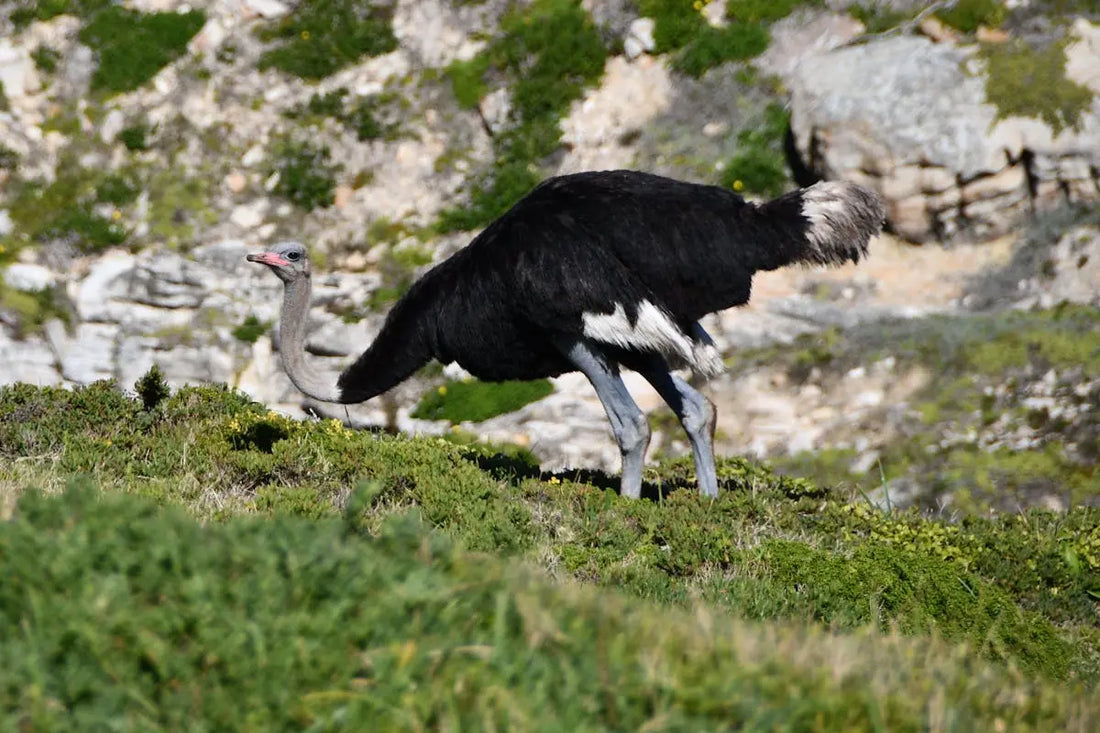
Ostrich Farming: Redefining Sustainable Agriculture
Share
Ostrich farming, a multifaceted and increasingly relevant sector within sustainable agriculture, is gaining recognition for its positive impact on the environment. In this article, we examine the various facets of farming ostrich, from breeding and rearing practices to the economic and ecological benefits. Let’s dive into why ostrich farming is garnering increasing interest from environmentalists and farmers alike.
The Basics of Ostrich Farming
The world of ostrich farming is as intriguing as it is beneficial, providing a multifaceted approach to sustainable agriculture. This section delves into the well-orchestrated dance of rearing the world’s largest bird, highlighting key practices that underscore its viability and eco-friendliness. From understanding the feed conversion ratio to appreciating the land and water efficiency of these majestic birds, readers will gain insights into the foundational elements that make ostrich farming a sustainable choice. Ostrich farming also offers a unique opportunity to tap into alternative revenue streams through products like feathers, leather, and eggs, further enriching the economic landscape of this agricultural sector.
A deep dive into the management techniques and animal welfare considerations reveals how farmers are able to ethically raise ostriches while maintaining a low ecological footprint. Essential aspects such as habitat requirements, dietary needs, and health management play a pivotal role in the success of sustainable ostrich farms, ultimately contributing to the preservation of our planet’s resources.
Environmental Benefits of Raising Ostriches
Ostrich farming shines as a paragon of environmental stewardship, drastically minimizing water usage and land impact when compared to traditional livestock. With ostriches requiring approximately one-third the water that cattle do for a comparable yield of meat, the implications for conservation in water-scarce regions are profound. Additionally, ostriches’ efficient land use, needing only 1/50th of the space that is necessary for grazing cattle, underscores their role in combating deforestation and promoting biodiversity.
The sustainability advantage of ostrich farming extends beyond the realms of water and land, addressing one of today’s most pressing environmental concerns: climate change. Unlike ruminants, ostriches produce negligible amounts of methane, a potent greenhouse gas. This remarkable attribute positions ostrich farming as a lesser contributor to climate change, marking it as a truly sustainable agricultural practice suited for the future.
How Ostrich Farming Contributes to Sustainability
The low environmental impact of ostrich farming is complemented by its notable contributions toward a more sustainable agriculture model. Efficient feed conversion rates imply that ostriches require significantly less feed to produce a kilogram of meat compared to cattle or pigs. This efficient resource utilization not only renders ostrich farming economically viable but also environmentally sound, further reducing the demand on agricultural resources such as grains and water.
Ostrich farming is not just about meat. The industry also leverages the production of high-value by-products like leather, feathers, and eggshells, enhancing its sustainability quotient. Such multi-purpose farming optimizes resource utilization, ensuring that every part of the ostrich contributes to the farm’s economic and ecological sustainability. It’s a holistic approach that mirrors nature’s own efficiency, minimizing waste and maximizing utility.
Challenges and Solutions in Sustainable Ostrich Farming
Despite the myriad benefits, sustainable ostrich farming faces its share of challenges, including public perception and market penetration. However, increasing customer awareness about the health benefits and environmental advantages of ostrich meat is gradually paving the way for greater acceptance. Educating consumers on the eco-friendliness and nutritional value of ostrich products continues to be a pivotal strategy for overcoming these barriers.
Another significant challenge lies in the high initial investment and need for specialized knowledge to run an ostrich farm successfully. Strategies to mitigate these challenges include leveraging government and private investment in research and development, as well as creating supportive networks for sharing knowledge and resources among ostrich farmers. Encouragingly, the resilience and adaptability of ostriches to various climates make them suitably placed to thrive globally, asserting the practicality of overcoming these initial hurdles.
Examples of Successful Sustainable Ostrich Farms
Around the globe, several ostrich farms stand as testaments to the viability and success of adopting sustainable practices in ostrich agriculture. Farms that emphasize ethical animal treatment, efficient resource use, and robust community engagement exemplify how sustainable principles can coalesce into a profitable, environmentally friendly venture. Through implementing innovative approaches to feeding, breeding, and land management, these farms not only contribute to the local economy but also inspire a shift towards more sustainable food systems.
By incorporating rotational grazing, renewable energy sources, and comprehensive waste management practices, successful ostrich farms demonstrate that high productivity can be achieved without compromising environmental integrity. Through dedication to sustainability and community collaboration, these farms pave a hopeful path forward, illustrating that with the right practices and ethical considerations, ostrich farming can be a cornerstone of eco-conscious agriculture.
Future Outlook: The Role of Ostrich Farming in Global Agriculture
Looking ahead, the role of ostrich farming in global agriculture appears increasingly significant. With the demand for sustainable and ethical food sources on the rise, ostrich farming stands poised to make substantial contributions to global food security and ecological preservation. As awareness grows and technological advancements in farming practices evolve, the potential for ostrich farming to expand its reach and impact is immense.
Through focused effort and innovation, ostrich farming can address critical challenges facing the agriculture sector, including climate change, resource scarcity, and the need for dietary diversification. The journey of ostrich farming, from a niche interest to a beacon of sustainability, is only just beginning. As it gains momentum, it offers a glimpse into a future where agriculture lives in harmony with nature, providing for our needs without depleting our world, emblematic of the true essence of sustainability.
A Hopeful Feather on the Horizon
As the world moves toward more eco-friendly and sustainable agricultural practices, ostrich farming stands out as a beacon of potential. With its low environmental impact, efficient resource usage, and beneficial by-products, this niche yet growing sector represents a hopeful path for future farming endeavors. Embracing the practices of sustainable ostrich farming could very well be a step towards a greener, more ethical agriculture worldwide. Discover more about how we contribute to this movement at Superior Ostrich.
